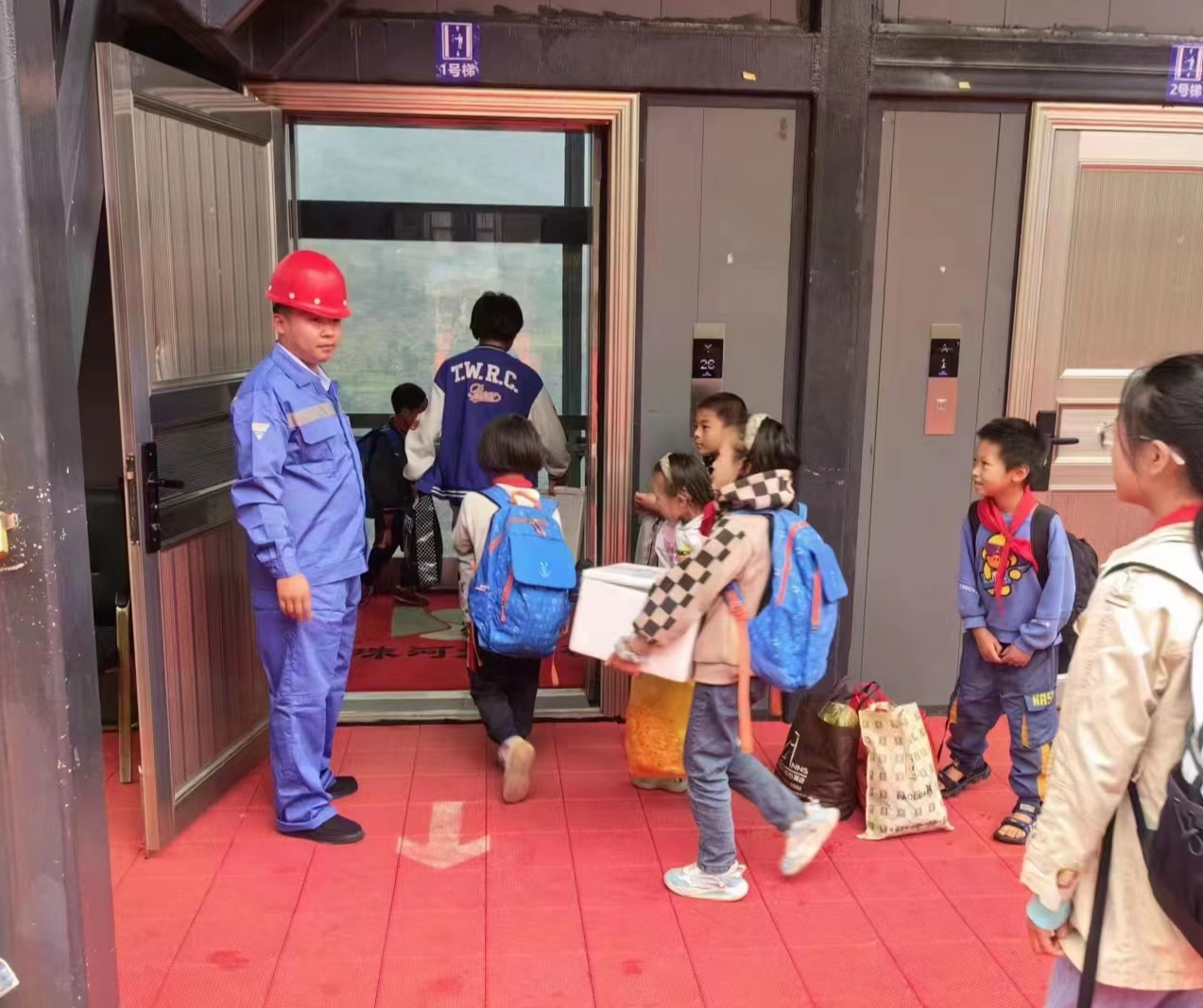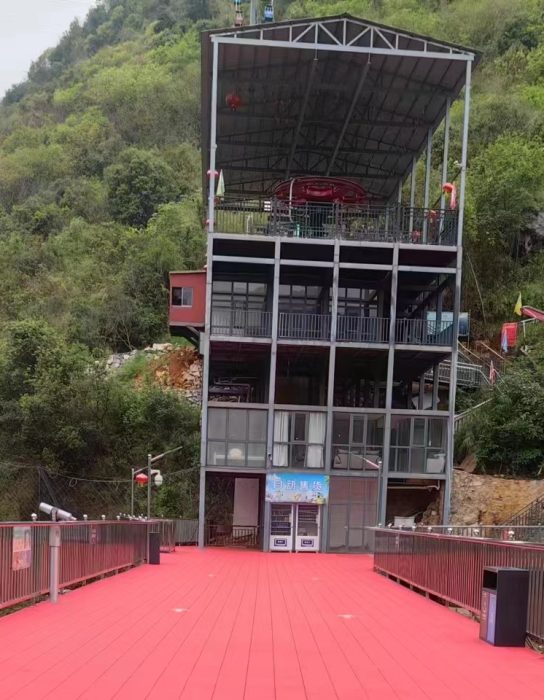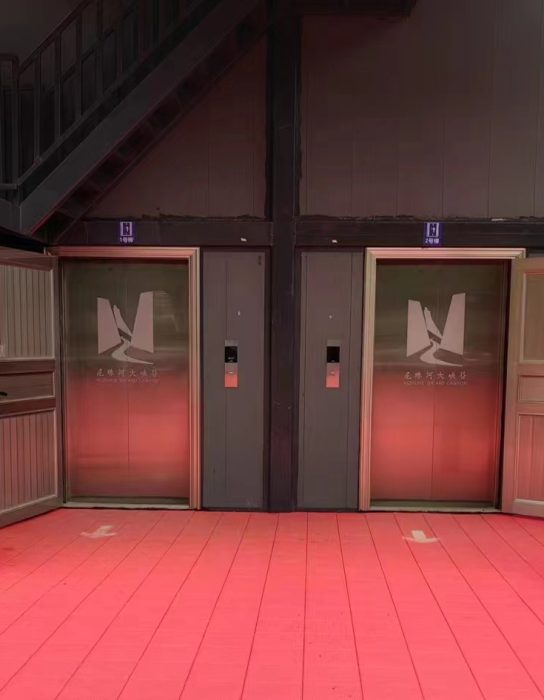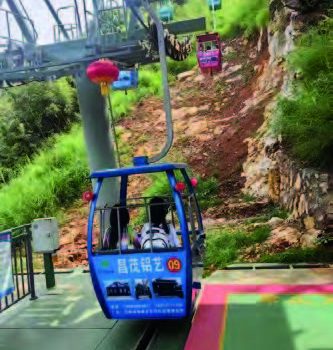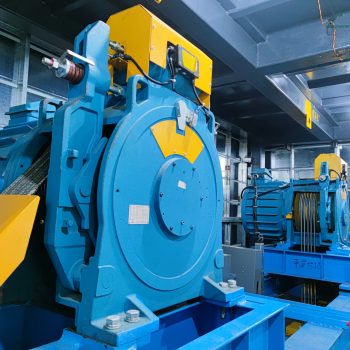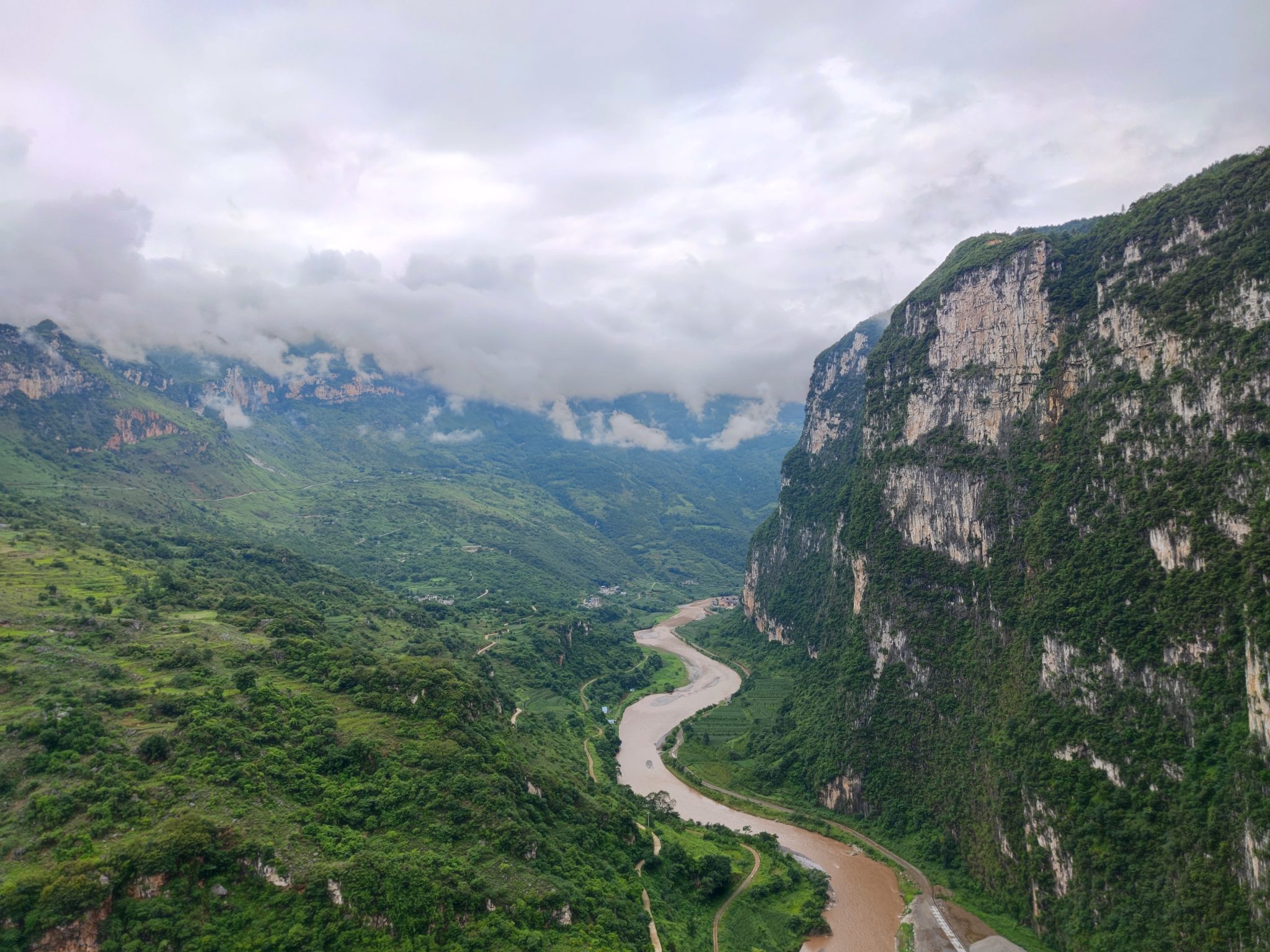Cliff elevators relay village kids to cable cars through a sky bridge, reducing their school commute from more than 2 h to 7 min.
photos by Xiong Qingman and Zhong Yi
It used to be a hardship beyond human physical limits to climb up this section of the mountain range, even halfway. In October 2021, however, a new elevator attraction appeared on the steep cliff of the Nizhu River Valley Ecological Park in Xuanwei, northeast Yunnan, China, right by the 3.5 km-long trail that leads to Phase One. In 2022, the dual elevators began to take visitors up and down, enabling them to have an up-close look at geological wonders — the crevices and the native mountainous landscape — while saving time and physical energy, as the 268-m scenic ascent takes only 90 s.

The steel beams increase in length, resulting in the need for the sky bridge at the hoistway’s apex.
In a sense, the cliff installations have played a wonderful role in helping kids from the scattered villages down in the valley go to school, which is located on the plateau. The new equipment saves the children at least 2 h in travel time; before, they had to climb using all four limbs along the most difficult, nearly vertically placed trails on their way to class.
In late 2017, construction of the Nizhu River Valley Ecological Park started. Key to the tourist project was a practicable solution to vertical transportation. The roughly 500 m-high mountains posed a great challenge to local economic development, let alone opening tourist resources and improving education. A combined application of elevators and cable cars was proposed, i.e., using elevators for the lower vertical cliff section, then switching to cable cars that can adapt to the changing slopes on the upper part and accommodate both visitors and villagers.
Nowadays, schoolkids from villages in the valley take a lift ride and then switch to cable cars. The combined travel takes them as little as 7 min. Hosting Elevator field technicians guide them in and out of the elevator cabin to secure their safety. It is a treat indeed for these children whose families have lived in the remote mountains for generations to ride high-speed elevators to school and learn how to be safe riders like city dwellers in a high-rise building.
The lift designers did their best to make the hoistway match the natural surroundings; the grand structure hangs against the brownish cliff, fixed with thousands of steel beams of different lengths adapted to the varying distances between the vertical structure of the shaft and the multi-surfaced mountain wall. At the top landing, the horizontal distance grows to its maximum, so a 43 m-long sky bridge overlooking the valley was constructed. It spreads 8 m wide to allow passengers to arrive at and depart from the lift landing quickly. Each side of the bridge passage is lined by a strong, 1.3 m-high guardrail to ensure pedestrian safety. The lower cable car station beckons passengers to board at the other end of the red-painted sky bridge, opposite the elevator doors. Once in the cable car, passengers can expect to set foot on the plateau in just a few minutes.
One of the toughest challenges for both the engineering and field teams of Hosting Elevator was the base support formation of the hoistway that often caused vertical vibration, requiring the effective release of strain and stress from the guiderails. The solution was found by means of redundancy absorber technology. It was a challenge for the field technicians to plumb the guiderails for erection at the start, too. The riverside area features a subtropical climate with moderate temperatures but sufficient rain, frequent fog and changing weather fronts; therefore, the shaft structure used a combination of glass and aluminum to achieve panoramic views and moisture-proofing.
The sway of the hoistway was balanced by adding so-called free multi-positioning damping assemblies to the machine. Another problem was how to sink heat from the drive and control systems. Flow-guiding, wind-resistant vent technology was applied to reduce the chimney effect and silent roller guides were employed to reduce traveling noise and to improve riding comfort, in addition to smart remote-control software working in real-time online. A specialized compensation rope system was applied to the dual lifts, too.
The most difficult job in the field was transporting the material upward from the bottom of the valley, which was found to be the only option. A one-lane country road zigzagging from the small town was the only route available for the material transport vehicle. Big components such as car assemblies had to be disassembled for loading and reassembled on the spot for installation, which required the greatest precision and patience. The moderately sized crane located halfway up the mountain had a limited loading capacity of 1600 kg — not enough to hoist a giant traction machine into the machine room directly. Fortunately, clever field engineers worked out a makeshift hoist that successfully lifted the unit foot by foot to the machine room through the hoistway.
The whole installation process was scaffolding-free. All work started from the very bottom, with the car ascending inch by inch. The fixation of the glass panels and aluminum sealing plates onto the hoistway exterior was carried out simultaneously. This innovative method not only raised work efficiency, but also secured field safety. It is worth mentioning that all aspects of this challenging project — from elevator design, engineering and manufacturing to installation and maintenance — were carried out by Hosting Elevator of Ningbo Xinda Group.

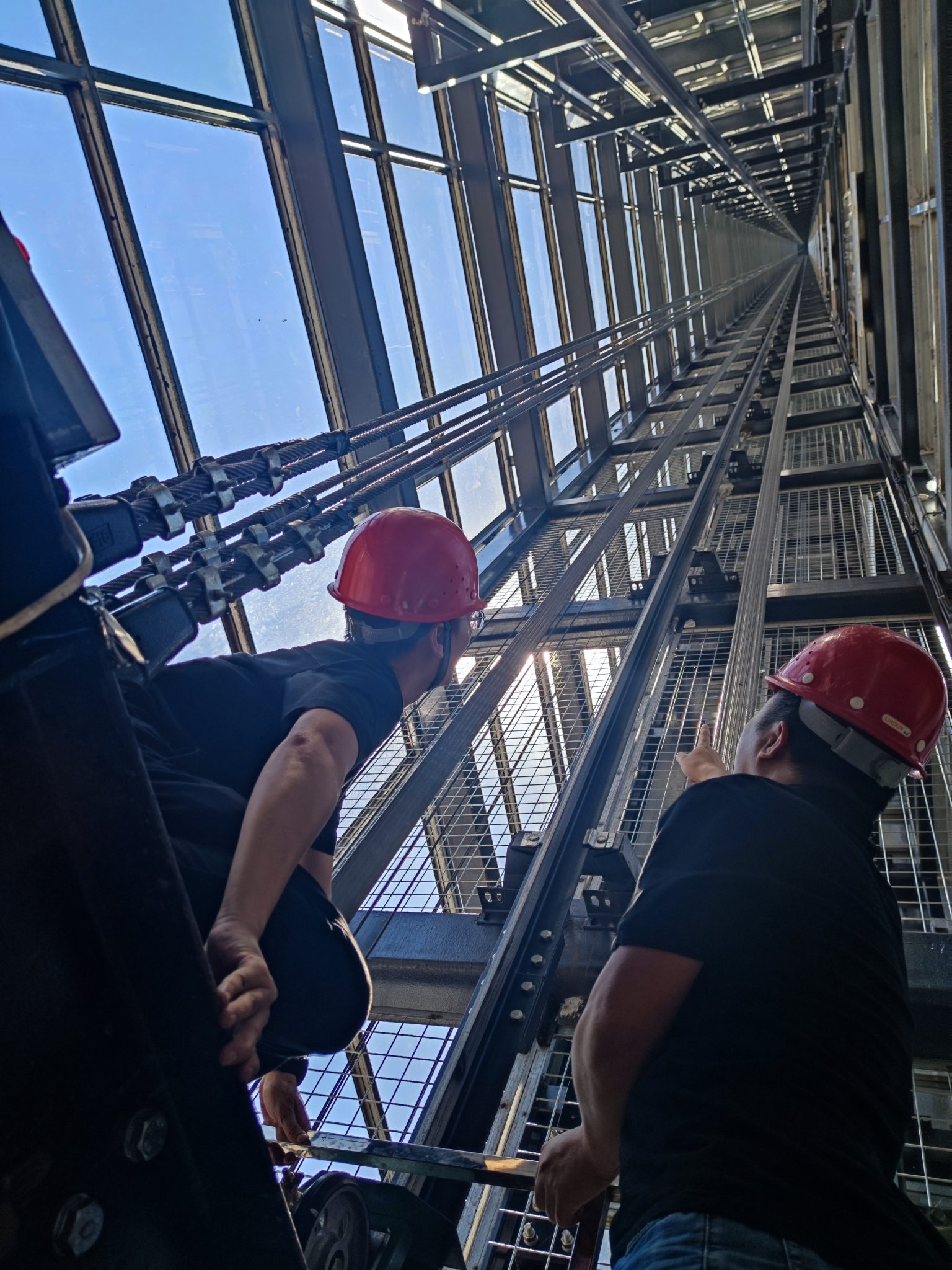

Get more of Elevator World. Sign up for our free e-newsletter.
